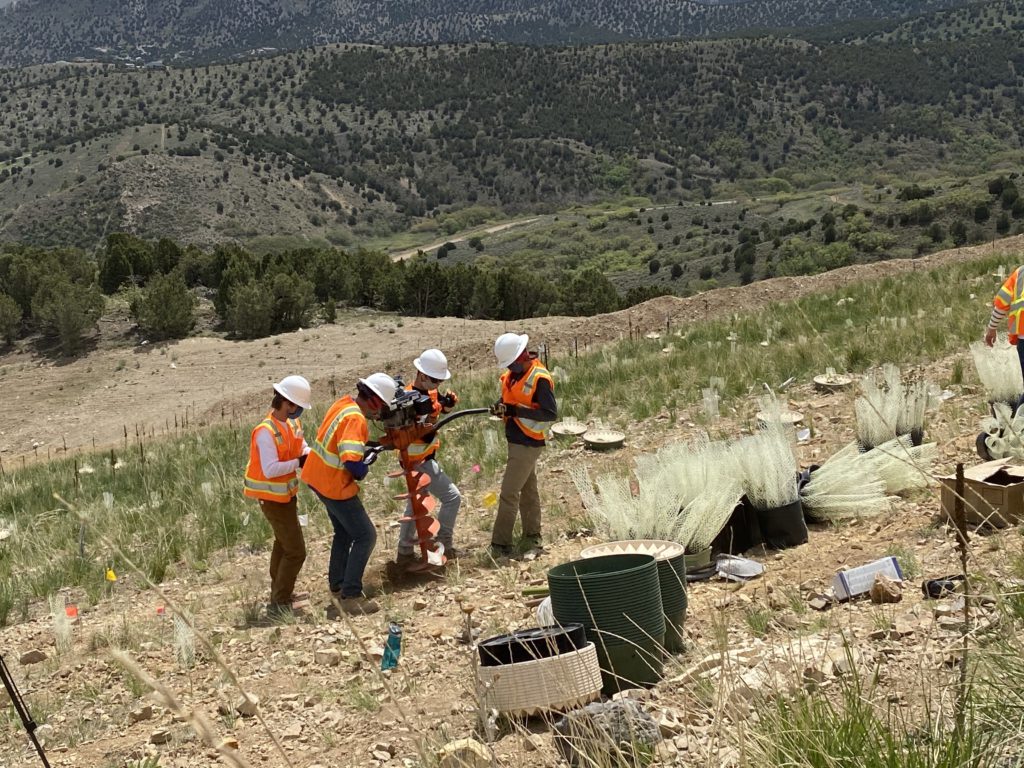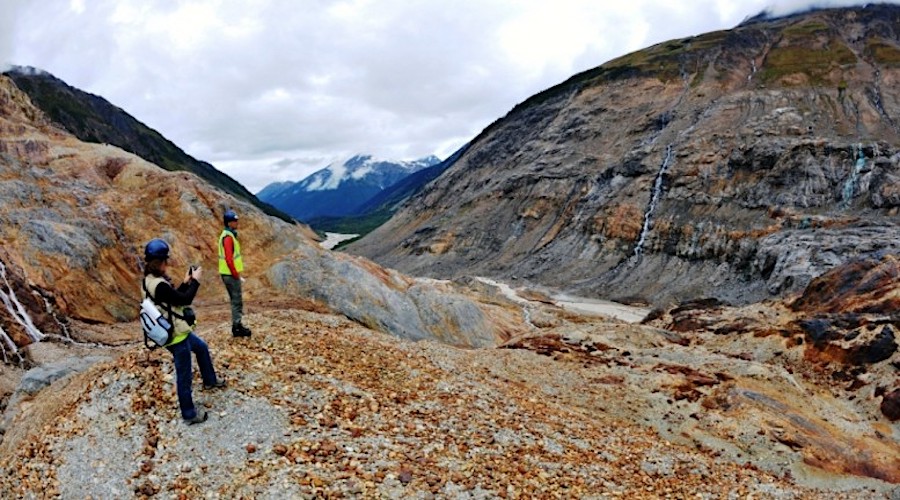Rio Tinto Kennecott, BYU researchers partner to improve reclamation at Bingham

Bingham Canyon, 30 miles south of Salt Lake City, Utah has been mined since 1906. The mine has produced more copper than any mine in history – more than 19 million tonnes. Rio Tinto bought Kennecott in 1989 and has invested more than $2 billion in modernizing the mine and another $450 million to clean up historic workings and ground water. Bingham was designated a National Historic Landmark in 1966. A massive landslide occurred at the mine in April 2013.
“This partnership is helping Rio Tinto Kennecott to continue improving the quality of its reclamation efforts and give our students the opportunity to learn skills that will benefit them in their future employment,” BYU
Associate Professor of Plant and Wildlife Sciences Matt Madsen said in a news release.
The restoration we are doing in these areas can benefit Utah’s land and community by bringing back native vegetation, improving the site for wildlife habitat, air quality and the viewshed here in Utah,” Madsen said.
“This partnership is helping to continue improving the quality of reclamation efforts and give our students the opportunity to learn skills that will benefit them in their future employment”
BYU
Associate Professor of Plant and Wildlife Sciences, Matt Madsen
“This partnership is an important step in advancing sustainable outcomes. Joining forces with BYU professors and students to apply the latest environmental research to further improve our effort is extremely rewarding,” said Rio Tinto Kennecott Managing Director Gaby Poirier.
“This joint project is mutually beneficial for Rio Tinto Kennecott, BYU and our surrounding communities, and we hope this project will be a stepping-stone for future collaboration that helps improve reclamation work at other locations in Salt Lake City and more widely,” Poirier said.
The partnership is employing 12 students on six different projects for the next three years, all of which contribute to land reclamation efforts. Study objectives include engineering seed coatings to increase seeding success, understanding the vital role of Curlleaf Mountain Mahogany, more effectively establishing perennial grasses and another to improve the viewshed of waste rock areas.
Alex Larson is one of two female BYU graduate students leading projects. Her Saints Rest Biodiversity Study is working to increase the diversity of plants on reclamation land by introducing shrubs and forbs that match the surrounding landscape, using a technique inspired by the process of how anti-epileptic medications work.
“When anti-epileptic medications are taken, the compounds that treat the symptoms are embedded in a biodegradable polymer, essentially a biodegradable plastic, which dissolves after ingestion, so it slows the release of the medication and increases its effectiveness,” said Larson.
“We are applying this same method to seeds. We have a biodegradable biocompatible polymer coating embedded with a growth hormone wrapping the seeds we are planting. This coating will help increase the germination success on the site compared to what would exist naturally.”
Graduate student Holley Lund is spearheading the Yosemite Waterboxx Study nearby. Her team is working to grow woody species that match the surrounding hillsides. Waterboxx irrigation technology maintains moisture in the soil during dry periods of the year so that seedlings can establish in the rocky soils. By the end of the project, they will have planted 656 shrubs and trees.
“Restoration has been done on this site before,” said Lund. “It looks great during parts of the year; however, these particular species go dormant, turn brown and stand out from the native hillsides during other seasons. Our goal is to establish a woody species that will match the green textures of the surrounding mountainside, help with erosion and provide food for wildlife.”




